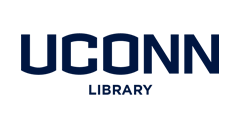Date of Completion
Fall 12-18-2024
Thesis Advisor(s)
Dr. Jamie Vaudrey; Dr. Jason Krumholz; Dr. Claudia Koerting
Honors Major
Marine Sciences
Disciplines
Aquaculture and Fisheries | Environmental Health | Environmental Indicators and Impact Assessment | Environmental Microbiology and Microbial Ecology | Environmental Monitoring | Food Microbiology | Marine Biology | Water Resource Management
Abstract
This project focuses on the integration of fecal bacteria from warm-blooded animals into bivalve tissue, and the utilization of bivalves as an indicator for fecal bacteria in waterways. Bivalves may give a more representative long-term average of fecal bacteria in water as compared to direct water testing. The primary objective is to create a standard operating procedure to use bacterial testing of bivalves as a proxy for bacteria concentration in the water. This method can be used in places where bivalves do not already exist by adding them to a body of water, or by collecting bivalves that already exist in a water body, and in both cases, then testing them for fecal bacteria contents. We conducted a study measuring fecal coliform in Oxecossett Brook, Stonington, CT, over 8 consecutive days, then tested the coliform content of existing wild ribbed mussels (Geukensia demissa) at the collection site on the final day. The average fecal coliform from direct water testing was 1243 MPN/100mL and the average fecal coliform in mussel collected was 91 MPN/g. The results show that ribbed mussels may be a good indicator of bacteria levels, but more research is needed.
Recommended Citation
Chuss, Kamala, "Using Bivalves as an Indicator for Fecal Bacteria" (2024). Honors Scholar Theses. 1106.
https://digitalcommons.lib.uconn.edu/srhonors_theses/1106
Included in
Aquaculture and Fisheries Commons, Environmental Health Commons, Environmental Indicators and Impact Assessment Commons, Environmental Microbiology and Microbial Ecology Commons, Environmental Monitoring Commons, Food Microbiology Commons, Marine Biology Commons, Water Resource Management Commons

